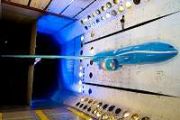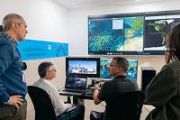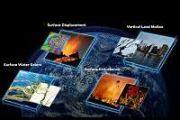
Copernical Team
Atlas 5 rocket launches U.S. communications satellite
 Following a handful of troubling valve issues that pushed a launch back for a week, an Atlas 5 rocket lifted off from Cape Canaveral Space Force Station in Florida at 10:04 p.m. EST on Thursday night, carrying a communications satellite for Viasat.
The 6-ton Viasat 3 satellite will be deployed from the Atlas rocket about 3 1/2 hours after launch, and eventually reach geostationary orbit
Following a handful of troubling valve issues that pushed a launch back for a week, an Atlas 5 rocket lifted off from Cape Canaveral Space Force Station in Florida at 10:04 p.m. EST on Thursday night, carrying a communications satellite for Viasat.
The 6-ton Viasat 3 satellite will be deployed from the Atlas rocket about 3 1/2 hours after launch, and eventually reach geostationary orbit Dream Chaser spaceplane passes pre-flight tests at Kennedy Space Center
 Sierra Space announced completion of a series of critical pre-flight tests for its Dream Chaser spaceplane at NASA's Kennedy Space Center, marking progress toward the vehicle's first uncrewed mission.
Dream Chaser underwent Electromagnetic Interference and Electromagnetic Compatibility testing in NASA's Space Systems Processing Facility to confirm the spacecraft's operation in expected ele
Sierra Space announced completion of a series of critical pre-flight tests for its Dream Chaser spaceplane at NASA's Kennedy Space Center, marking progress toward the vehicle's first uncrewed mission.
Dream Chaser underwent Electromagnetic Interference and Electromagnetic Compatibility testing in NASA's Space Systems Processing Facility to confirm the spacecraft's operation in expected ele Blue Origin launches NASA Mars mission and nails booster landing
 Jeff Bezos's Blue Origin successfully launched its New Glenn rocket on Thursday with NASA twin spacecraft destined for Mars aboard, and in a breakthrough nailed the landing of its booster.
The launch was stalled for days over weather both on Earth and in space, but it was worth the wait: in the rocket's second-ever flight, Blue Origin managed to recover the booster for reuse.
Ecstatic ch
Jeff Bezos's Blue Origin successfully launched its New Glenn rocket on Thursday with NASA twin spacecraft destined for Mars aboard, and in a breakthrough nailed the landing of its booster.
The launch was stalled for days over weather both on Earth and in space, but it was worth the wait: in the rocket's second-ever flight, Blue Origin managed to recover the booster for reuse.
Ecstatic ch China's Shenzhou-20 astronauts return to Earth after delay
 Three Chinese astronauts returned to Earth on Friday, state TV footage showed, after a delay caused by their spacecraft being struck by debris in orbit.
The Tiangong space station, the crown jewel of China's space programme, is crewed by teams of three astronauts who are exchanged every six months.
The return of the Shenzhou-20 spacecraft and crew were planned for November 5, after the S
Three Chinese astronauts returned to Earth on Friday, state TV footage showed, after a delay caused by their spacecraft being struck by debris in orbit.
The Tiangong space station, the crown jewel of China's space programme, is crewed by teams of three astronauts who are exchanged every six months.
The return of the Shenzhou-20 spacecraft and crew were planned for November 5, after the S Earth from Space: Prague
 Image:
This very high-resolution image captures the beautiful medieval core of the Czech capital, Prague.
Image:
This very high-resolution image captures the beautiful medieval core of the Czech capital, Prague. ESA pinpoints 3I/ATLAS’s path with data from Mars

Since comet 3I/ATLAS, the third known interstellar object, was discovered on 1 July 2025, astronomers worldwide have worked to predict its trajectory. ESA has now improved the comet’s predicted location by a factor of 10, thanks to the innovative use of observation data from our ExoMars Trace Gas Orbiter (TGO) spacecraft orbiting Mars.
When space junk comes home
This request seems a bit unusual, so we need to confirm that you're human. Please press and hold the button until it turns completely green. Thank you for your cooperation!
Press and hold the button
If you believe this is an error, please contact our support team.
185.132.36.159 : 4fbb6d49-e229-4fdb-9b81-5857e494
It's time to give the moon its own time
This request seems a bit unusual, so we need to confirm that you're human. Please press and hold the button until it turns completely green. Thank you for your cooperation!
Press and hold the button
If you believe this is an error, please contact our support team.
185.132.36.159 : 9f4359a7-780a-406c-a2ac-f2d31f0d
Space debris struck a Chinese spacecraft. How the incident could be a wake-up call for international collaboration
This request seems a bit unusual, so we need to confirm that you're human. Please press and hold the button until it turns completely green. Thank you for your cooperation!
Press and hold the button
If you believe this is an error, please contact our support team.
185.132.36.159 : 5218352a-15a9-497a-94bf-d46e1eb0
Let's go on an ESCAPADE: NASA's small, low-cost orbiters will examine Mars' atmosphere
This request seems a bit unusual, so we need to confirm that you're human. Please press and hold the button until it turns completely green. Thank you for your cooperation!
Press and hold the button
If you believe this is an error, please contact our support team.
185.132.36.159 : 84bb8678-f49c-4062-8f28-6bb17412




































